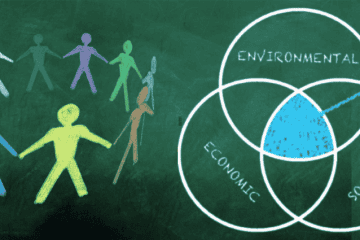Social Value Series (Part 1/6)
Social Value: A New Way to Measure Success
In the past, the success of a business or organization was often measured by its financial performance. However, in recent years, there has been a growing recognition that financial performance is not the only measure of success. Businesses and organizations are also being judged on their social impact, or the positive or negative effects they have on society.
This shift in thinking has led to the development of a new concept called social value. Social value is the value of the positive impacts that a business or organization has on society. It can be measured in a variety of ways, including the number of jobs created, the amount of money saved, and the improvement of quality of life.
There are many benefits to measuring social value. First, it can help businesses and organizations to make better decisions. By understanding the social impact of their activities, they can choose to invest in projects that will have the greatest positive impact on society. Second, social value can help to build trust and goodwill between businesses and organizations and the communities in which they operate. Third, social value can help to attract and retain employees, customers, and investors.
There are a number of ways to measure social value. One common approach is to use a social impact assessment (SIA). An SIA is a process of identifying, measuring, and valuing the social impacts of a project or activity. SIAs can be conducted by businesses, organizations, governments, and other stakeholders.
Another way to measure social value is to use a social return on investment (SROI) calculation. SROI is a financial metric that measures the social value of an investment. It is calculated by dividing the total social benefits of an investment by the total costs of the investment.
Measuring social value is not always easy, but it is becoming increasingly important. By understanding the social impact of their activities, businesses and organizations can make better decisions, build trust, and attract the resources they need to succeed.
Here are some examples of how social value can be measured:
- Jobs created: This can be measured by the number of new jobs created directly or indirectly by a project or activity.
- Money saved: This can be measured by the amount of money that is saved by a project or activity, such as by reducing crime or improving public health.
- Improvement of quality of life: This can be measured by the extent to which a project or activity improves the quality of life for individuals or communities, such as by providing access to education, healthcare, or other essential services.
Here are some examples of how social value can be used:
- Businesses: Businesses can use social value to make better decisions about where to invest and what projects to undertake. They can also use social value to build trust and goodwill with their customers, employees, and investors.
- Governments: Governments (local and national) can use social value to assess the impact of their policies and programmes. They can also use social value to allocate resources more effectively. When tendering for services social value can be part of the decision-making process.
Social value is a powerful tool that can be used to improve society, with the interests of businesses aligned to the needs of local communities. Social value outcomes are regularly included as part of the evaluation criteria in government tenders.

